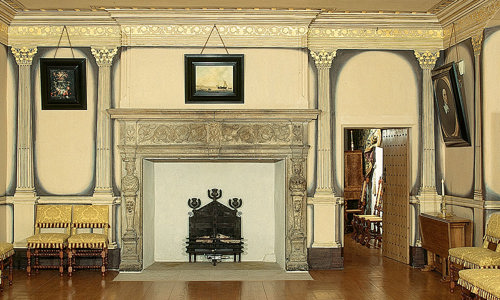History
The Dunfallandy Stone is a remarkable example of Pictish Insular art. Little Pictish art survives other than sculpture, so we need to look to monuments like the Dunfallandy Stone for clues as to what has been lost. It gives us an insight into the minds of the Picts.
The stone depicts:
- a cross carved in relief on one face, with a background of figurative panels
- on the reverse, three figures, two seated and one on horseback
- a pair of fish monsters clasping a human head surrounding the three figures
- a ‘beast’ with an unfinished symbol, a double-disc, a crescent and a V-rod above the figures
- more symbols above and below the horseman
What does it mean?
The figures and symbols of the Dunfallandy Stone have been a source of debate. Each of the three figures seems to have symbols directly associated with them, possibly captions or describing their attributes.
One theory says the stone depicts a meeting of St Paul and St Anthony in the desert. But the images on the stone could just as easily show contemporary people, either secular or religious.
It’s likely the Dunfallandy Stone stands on its original site. There may well have been an early medieval church here.














